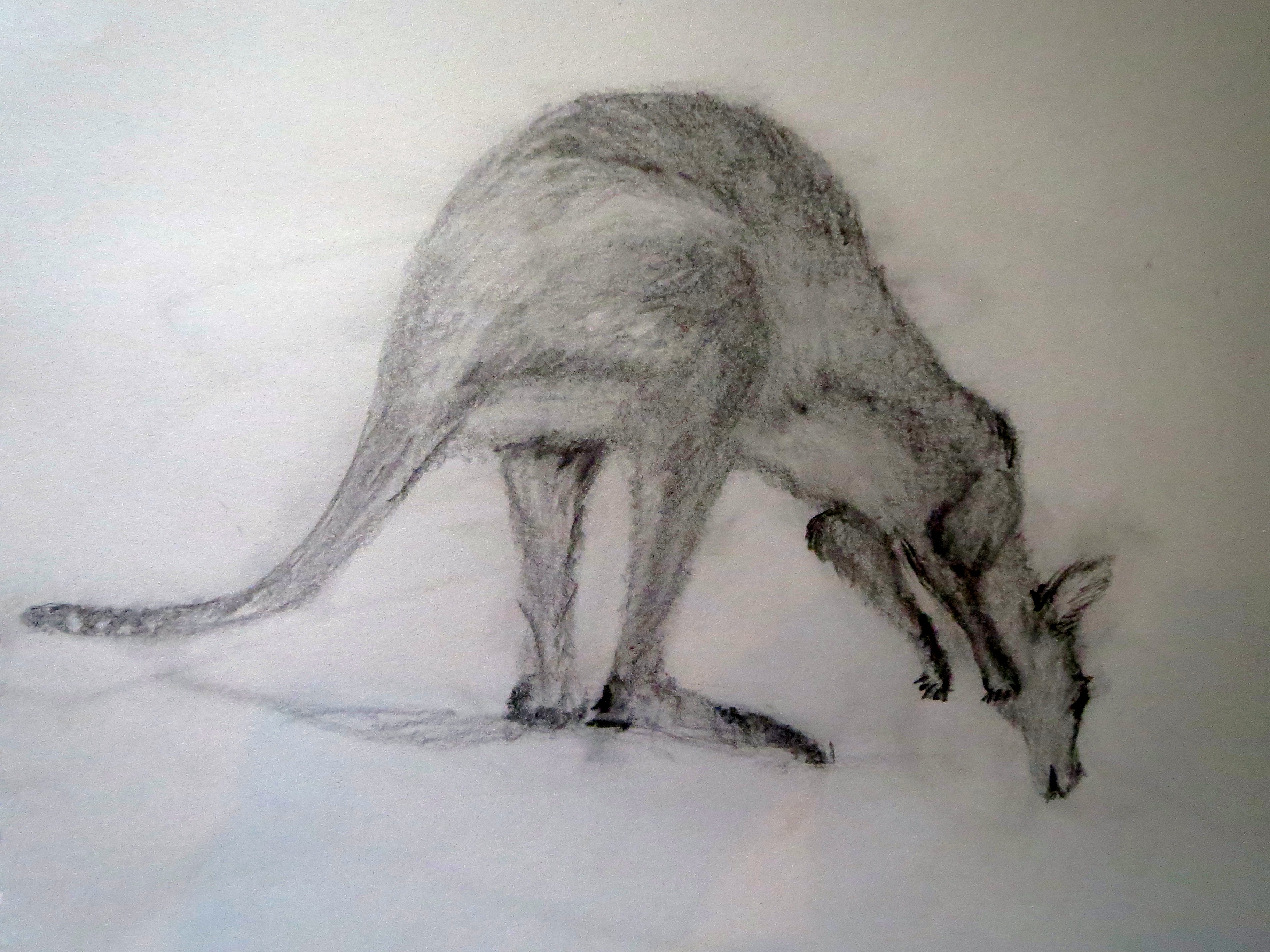I spent early Saturday evening with a billabong of animals.
And artist Sam Cranstoun, twice finalist in Australia’s most popular art competition the Archibald Prize.
Maybe my community is a little more diverse than I think because for a few moments I feel at home among the giraffes and moose and water buffalo and kangaroos. I’m just another animal in the high-ceilinged room, my breathing punctuated by the occasional raindrop onto the installation pond and the sound of pencils on paper.
I’m sketching — or rather learning to sketch — one of the exhibits at the Falling Back to Earth installation by Chinese artist Cai Guo-Qiang. It’s a collection of 99 animals from different countries drinking side by side at a blue lake surrounded by white sand.
Cranstoun, our teacher, is a young Brisbane man with a list of artistic credentials and awards that is longer than his beard and date back to almost before he started university.
A flutter of intimidation rolls through me as I’m handed my sketch board, pencils and several large blank sheets of paper.”I’ll only need one piece of paper,’’ I joke to no one in particular.As much as I am the person who cannot draw in this small class, I am also the person who wants to draw. Who wants to learn.
Start by sketching the outline, really quickly, don’t take your eyes off your subject, two minutes only, keep your eyes on it, we’re warming up here, it doesn’t matter if you end up with eight legs or sketches on top of sketches, Cranstoun says.
As I start, I realize there are lessons I’m learning that I can apply to my life in general and belonging in particular: try more new things.
I don’t know how Cranstoun does it but he guides us through several sketches. His manner is gentle. He offers suggestions. He teaches without teaching. I learn without being taught.
We are sitting on portable black stools looking at the backsides of the animals closest to us. Tails and legs and muscular hindquarters below wet fur. We try different shading techniques, moving from a 2B pencil to the softer 4B and 6B pencils.Think about perspective, Canstoun suggests.
I’m overwhelmed. Where do all those legs and tails and hooves intersect? Which horizon? I want to ask, I see so many. Concentration and focus balloons my skull, stretching it.At the same time, I love it.
I am lost in kangaroo pelt and muzzle and forearms. I’m lost in looking, seeing and shading. I’m lost like in my writing, lost like in a good book. There are no boundaries between me and the room and the animals. My edges have blurred.
I come out of my sketching slowly. Like I’ve been wandering deep inside the dreaming of my brain.I hold my sketch out in front of me.Amazing.In trying something new, I’ve discovered that I can sketch. And now, just days after, I’m looking at the world differently. I see new colours and the interplay of shadow and definition and I’m trying to understand how perspective is achieved.
I’ve also figured out something about community: that it cannot be manufactured based on geography alone. Yes a few people are very fortunate to have found like-minded neighbours but maybe my people are dotted across other communities that are not geographically connected.I remember what Sherridan wrote on this website about volunteering: find something that reflects my values.Maybe I should be looking more to the art community for my kindred spirits? After all, aren’t artists — writers, musicians, sculptors, photographers, painters — aren’t we all asking questions and looking for ways to share and connect?
Aren’t we all exploring belonging in some small way?

